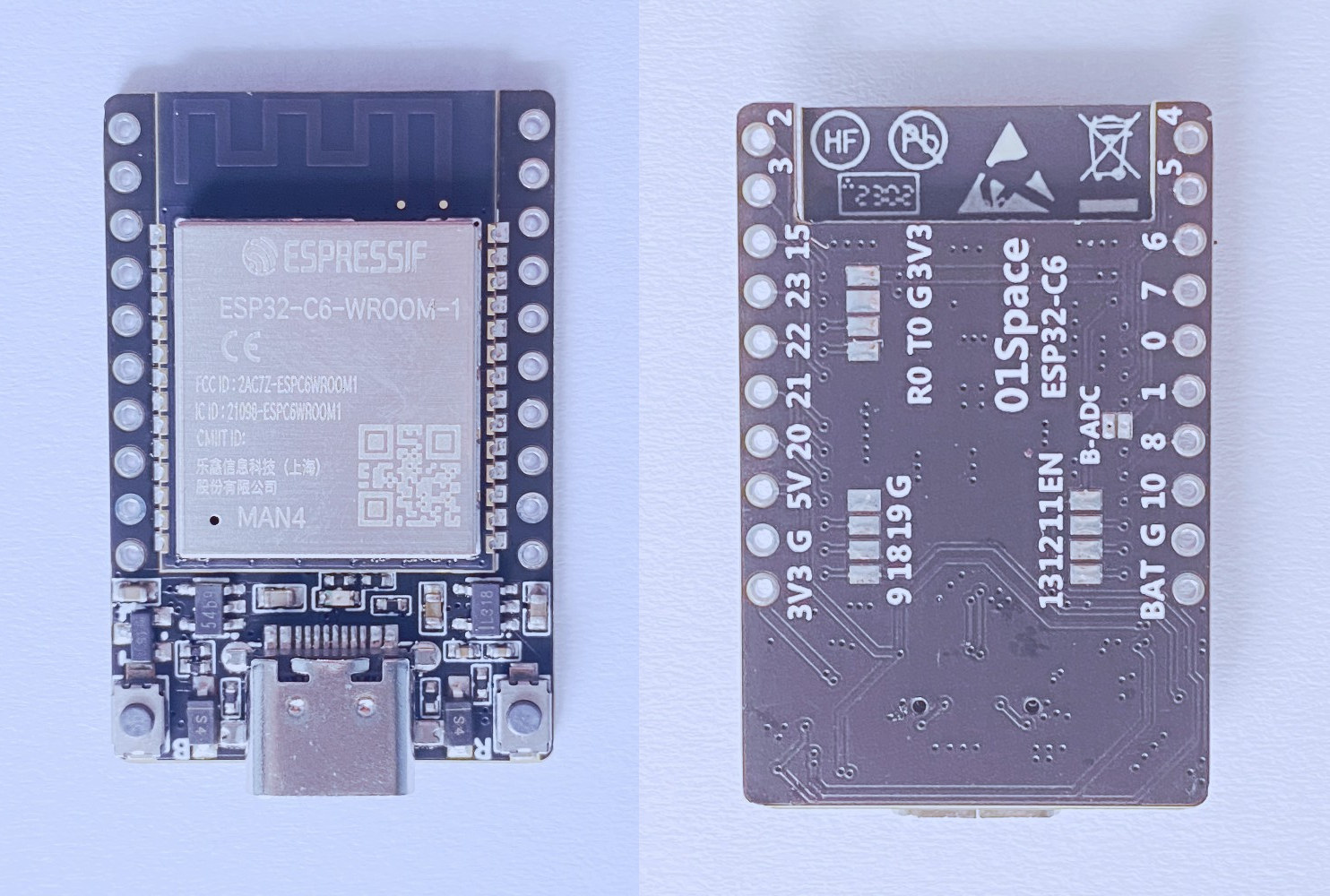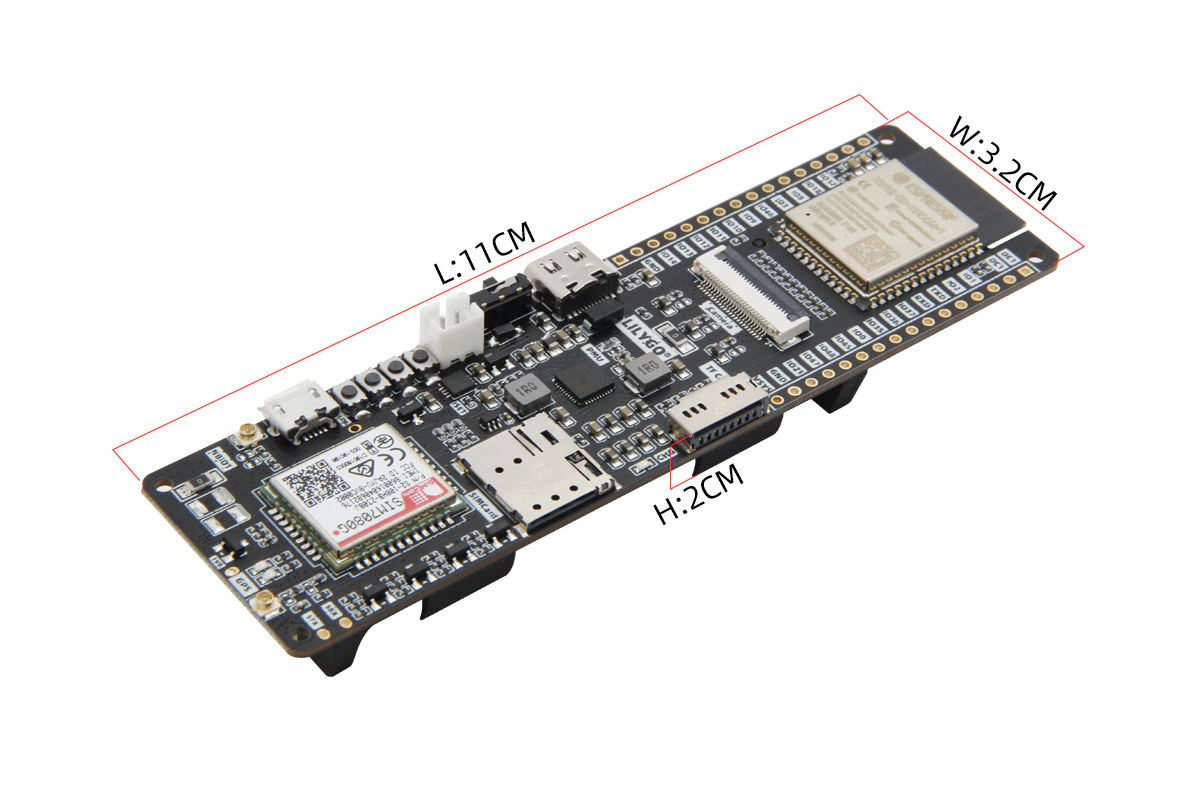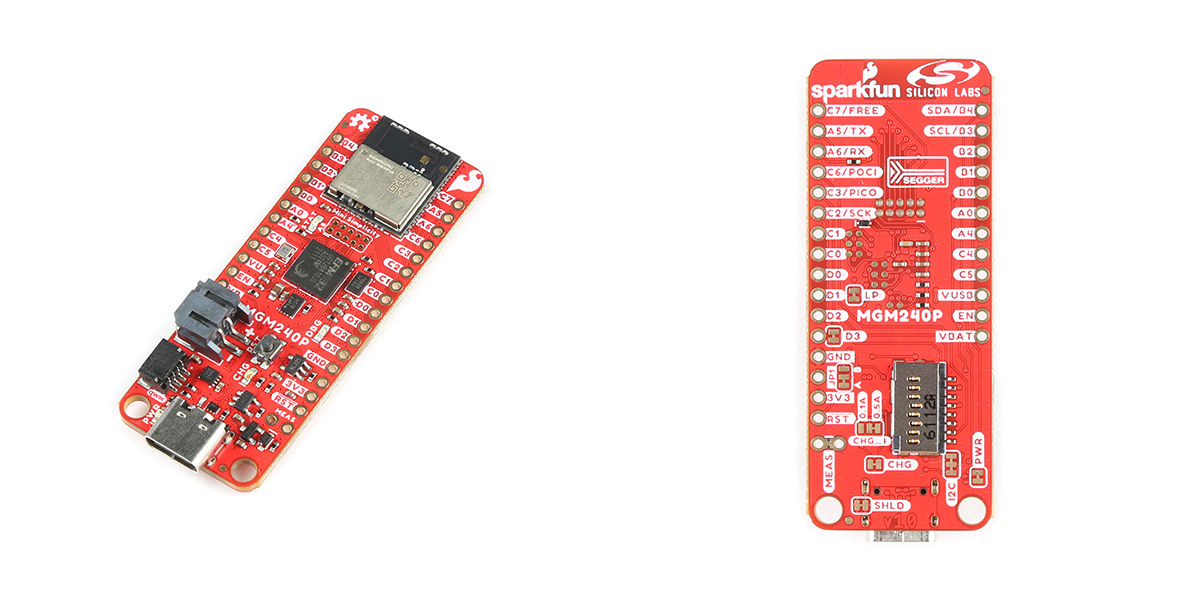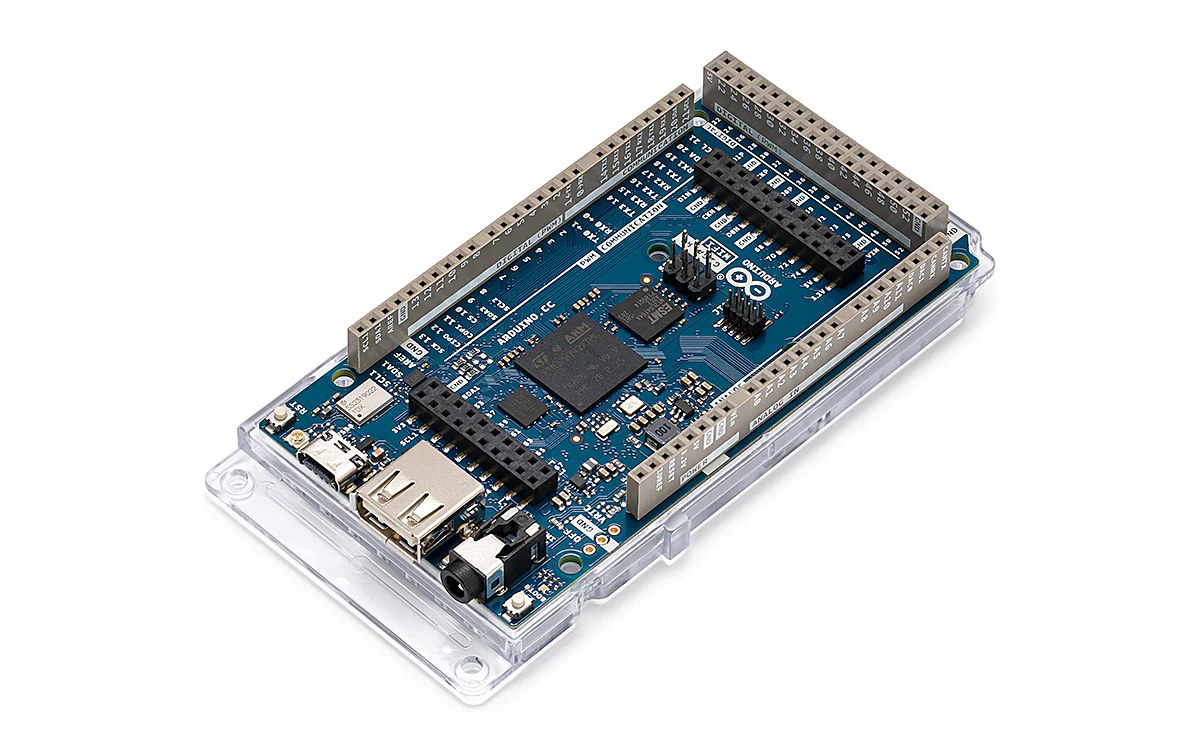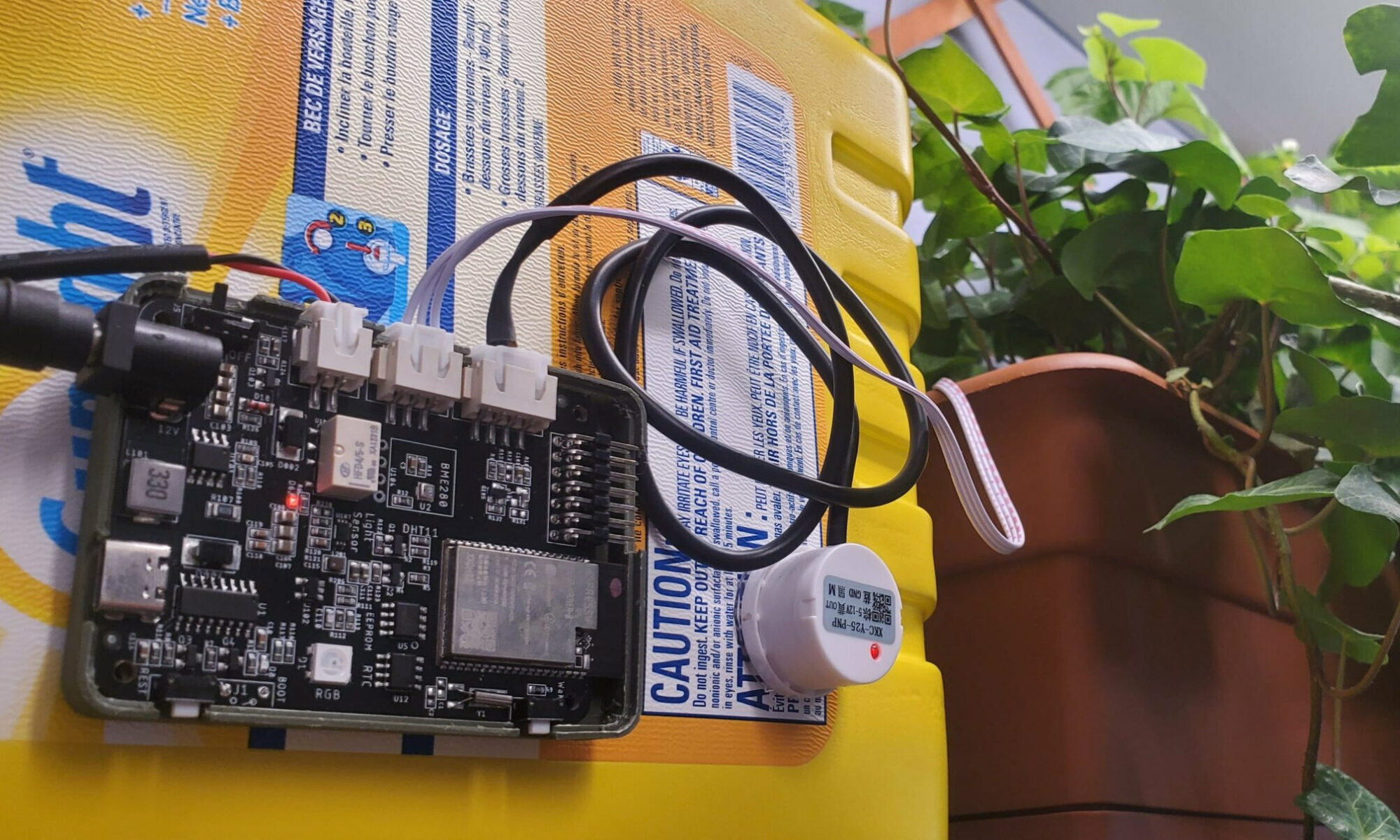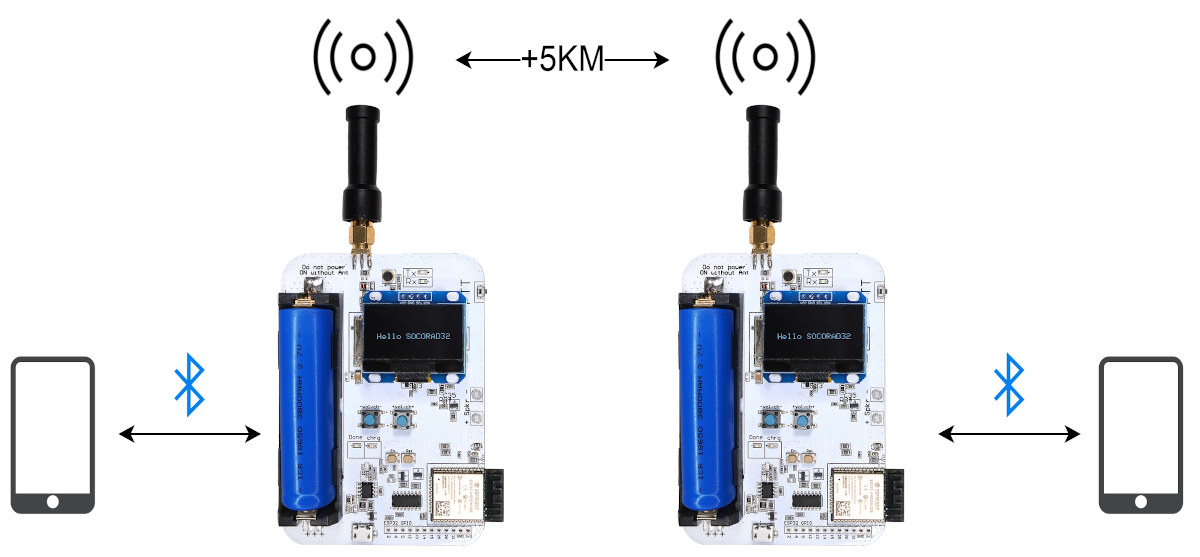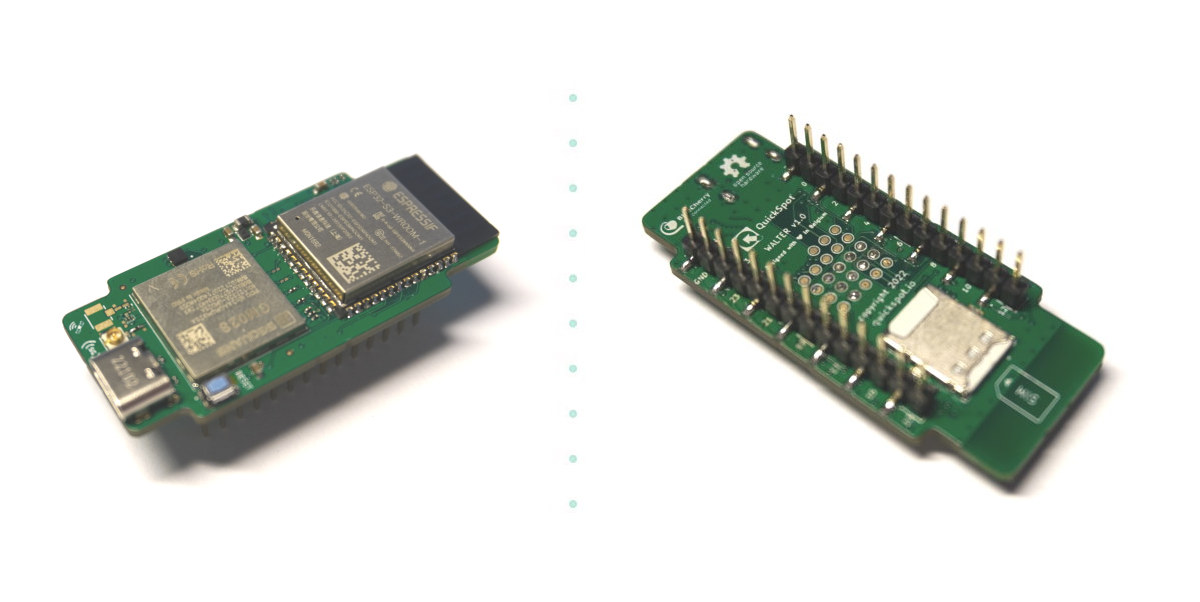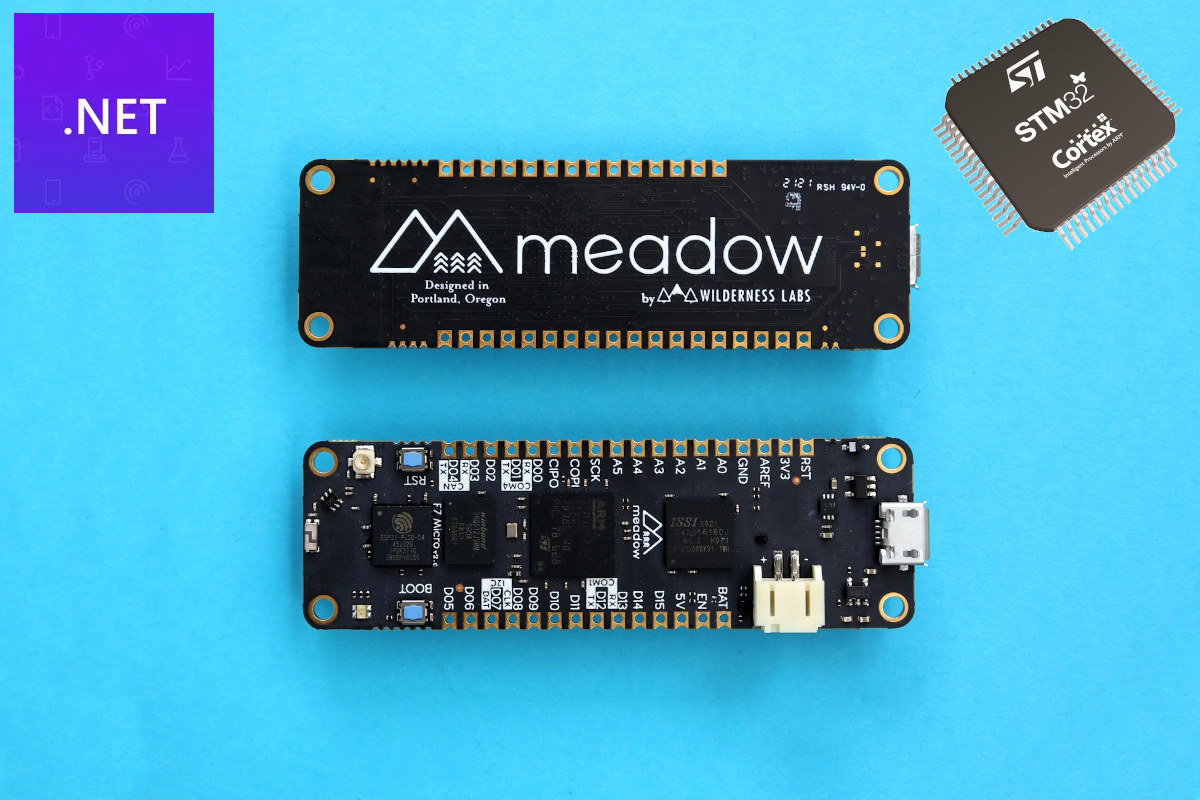Tiny ESP32-C6 IoT board supports 2.4 Ghz WiFi 6, Bluetooth 5.0 Low Energy, and 802.15.4 radio
01Space has designed a tiny ESP32-C6 IoT board with WiFi 6 and Bluetooth LE 5.0 connectivity built around the ESP32-C6-WROOM-1 wireless module, and exposing I/Os through two 10-pin headers. Espressif launched their ESP32-C6 modules and development kits last January, and the 01Space is the first third-party ESP32-C6 board we’ve covered. It’s a minimal board with a wireless module, a USB Type-C port for power and programming, and Reset and Boot buttons. 01Space ESP32-C6 board specifications: Wireless module – ESP32-C6-WROOM-1-N4 module with Espressif Systems ESP32-C6 single core 32-bit RISC-V processor @ 160 MHz with 2.4 Ghz WiFi 6 1T1R, Bluetooth LE 5.0, and 802.15.4 radio for Zigbee/Thread/2.4GHz proprietary Storage – 4MB SPI flash Onboard PCB antenna USB – 1x USB Type-C port for power and programming I/Os – 2x 10-pin headers with UART, I2C, I2S, RMT (TX/RX), LED PWM, USB Serial/JTAG controller, etc… 5V, 3.3V, VBAT, GND Misc – Reset and […]


